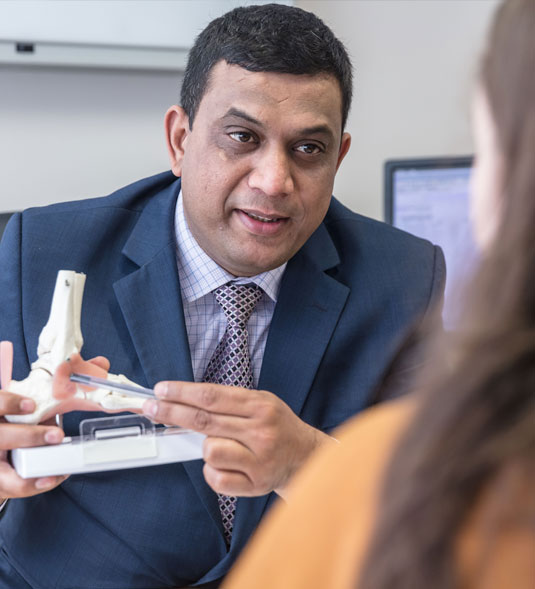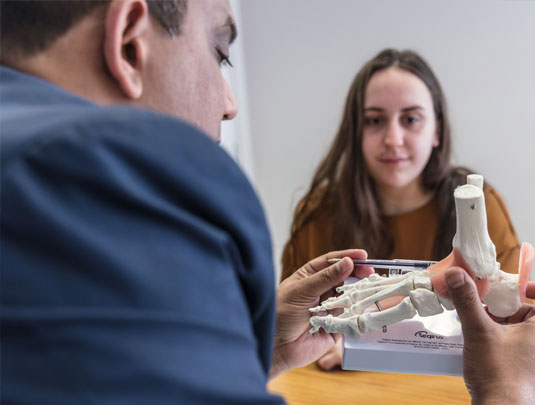Ankle Arthroscopy
What is Ankle Arthroscopy?
Ankle arthroscopy is a minimally invasive form of surgery that is used to diagnose and treat problems in the ankle joint. During ankle arthroscopy, your South Coast Orthopaedic surgeon will make two or three small incisions into your ankle and insert a thin, metal tube. The tube holds a light source and a camera, as well as any small surgical instruments that may be required.
Why Do I Need an Ankle Arthroscopy?
Our specialist ankle surgeon may recommend ankle arthroscopy if your ankle pain isn’t responding to non-surgical treatments. Ankle arthroscopy procedures can also help our surgeon to further investigate the exact source of your pain.
How Do I Prepare for an Ankle Arthroscopy?
Ankle arthroscopy is a minimally invasive (keyhole) procedure. At your consultation in our rooms, our orthopaedic surgeon will talk to you about your specific situation and you will be given written information on how to best prepare for surgery.
During your consultation, he will ask you about any prescriptions, medications, or supplements that you’re currently taking. You may be asked to stop taking certain medicines, such as blood thinners or ibuprofen, before the procedure. You will probably also be told to stop eating a number of hours before surgery.
During your consultation, he will ask you about any prescriptions, medications, or supplements that you’re currently taking. You may be asked to stop taking certain medicines, such as blood thinners or ibuprofen, before the procedure. You will probably also be told to stop eating a number of hours before surgery.


Recovery from Ankle Arthroscopy
Ankle Arthroscopy is usually performed as a day procedure, and most patients go home after a two- or three-hour recovery period.
Before your surgery, you will be given information about your recovery process. It’s a good idea to have someone at home to look after you on the first day as you may still feel the effects of your anaesthetic. You may also be asked to keep your ankle elevated and to use an ice pack for the first few days.
After an ankle arthroscopy, you will need to change your dressing. Either your surgeon, or a member of our South Coast Orthopaedic medical team will tell you when and how to do this, and how regularly. You will also be asked to attend a follow-up appointment two weeks after the procedure.
You will also be given an exercise routine to follow when you go home. This will help your ankle to recover. You might also need to see a physiotherapist until your ankle has regained a good range of motion.
Before your surgery, you will be given information about your recovery process. It’s a good idea to have someone at home to look after you on the first day as you may still feel the effects of your anaesthetic. You may also be asked to keep your ankle elevated and to use an ice pack for the first few days.
After an ankle arthroscopy, you will need to change your dressing. Either your surgeon, or a member of our South Coast Orthopaedic medical team will tell you when and how to do this, and how regularly. You will also be asked to attend a follow-up appointment two weeks after the procedure.
You will also be given an exercise routine to follow when you go home. This will help your ankle to recover. You might also need to see a physiotherapist until your ankle has regained a good range of motion.